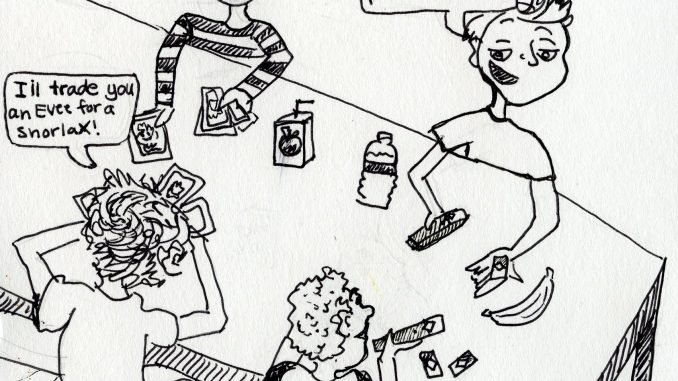
Back when the coolest kids in school were the ones with the most Silly Bandz on their wrists, or the biggest collection of Webkinz, we were taught to look out for people trying to pressure us into trying drugs and alcohol. Warnings of mysterious figures in trench coats selling us poison plagued our darkest fears. For today’s youth, that figure comes in the form of flashy, inescapable advertisements for nicotine addiction.
This is, for the most part, thanks to Juul Labs, Inc., the tobacco company founded in 2017 with the mission to “improve the lives of the world’s one billion adult smokers.” When Juul Labs initially launched their product, an electronic cigarette that comes in a wide variety of “flavors,” the idea of vaping was nothing new; the first non-smoking cigarettes in the United States date back to 1963.
But with Juul, vaping became more attractive, even to those who had never touched a cigarette in their lives. The design, a sleek, dark grey chrome body often compared to that of a USB flash drive, was more accessible than the often clunky vapes that came before it. This is the most likely reasoning behind the sudden burst of the products popularity; from 2017 to 2019, e-cigarette use amongst high schoolers increased by 135%, according to data compiled by the Campaign for Tobacco-Free Kids.
After this increase in users came the waiting game. As a non-FDA approved product, no government-sanctioned tests have been performed on Juul Labs’ product. This meant that thousands of Americans, many of them 18 and under, were essentially inhaling potentially harmful products into their lungs daily. There was something of an unsaid agreement that this new trend would pose health risks, much like its tobacco-based predecessor. It was just a matter of when, and how?
The answer came in the form of a New York Times article, “The Mysterious Vaping Illness That’s ‘Becoming an Epidemic’” published on Aug. 31. While the cases outlined in the article are hardly the first to pop up, they’re certainly the first to make waves. In the days following, dozens of related cases were reported, all presenting similar symptoms: chest pain, vomiting, nausea and, in some severe cases, an inability to breathe.
Several days later, on Sept. 5, the New York State Department of Health issued a press release that localized these illnesses. The release went on to explain that though the reported cases were all thought to be due to the use of cannabis-based vape products, they encouraged users to consider not using any vape products.
For New York State Gov. Andrew Cuomo, a mere warning wasn’t enough. On Sept. 15, Cuomo formally announced a ban on the sale of all flavored e-cigarettes, and on Sept. 18, the ban was approved. Effective immediately, the ban will restrict the sale of every flavor of e-cigarette besides menthol and tobacco.
We at The New Paltz Oracle applaud Gov. Cuomo for taking action to prevent this dangerous trend, which is now being viewed by many as an epidemic, from getting any worse. Furthermore, we support Cuomo’s decision to prevent the sales of flavored e-cigarettes, as it is a law that will hopefully keep these harmful products out of the hands of children.
According to 2018 data from the Centers for Disease Control and Prevention (CDC), close to one in every 20 middle school students reported that they had used an e-cigarette in the past 30 days. Amongst high schoolers, this number rose to one in every five, roughly 20%.
Of these, 56% of middle schooler students and 73% of high school students reported that they had used a flavored e-cigarette product in that time. These numbers only prove what is already common knowledge: flavored tobacco products make them more appealing to youth.
Juul Labs is, once again, partly to blame for this. Apart from the aforementioned attractive design, the product also comes along with attractive flavors: mango, mint, cucumber, creme brulee, and more. By offering nicotine in flavors that you would commonly find candy in, it’s hard to believe that Juul Labs didn’t see this coming.
In a statement to The New York Times, a spokesperson for Juul Labs agreed with “the need for ‘aggressive category-wide action on flavored products’” and stated that the company will comply with any state (and eventually, federal) laws and policies put into place.
While they wait, Juul Labs is putting minimal effort into keeping their products away from children. On their website and in many stores, you can still purchase flavored pods with both 5% and 3% nicotine.
We at The Oracle believe Juul Labs shouldn’t wait for lawmakers in order to take action. To take responsibility for the trend they created would be wise, and an honorable next step would be pulling all of their flavored products from shelves both in-store and online nationwide, even before they are forced to do so.
We hope to see continued support for the banning of flavored e-cigarettes, and expect even more to be done to keep these products away from children. In middle school, kids develop a lot of things; a nicotine addiction shouldn’t be one of them.
